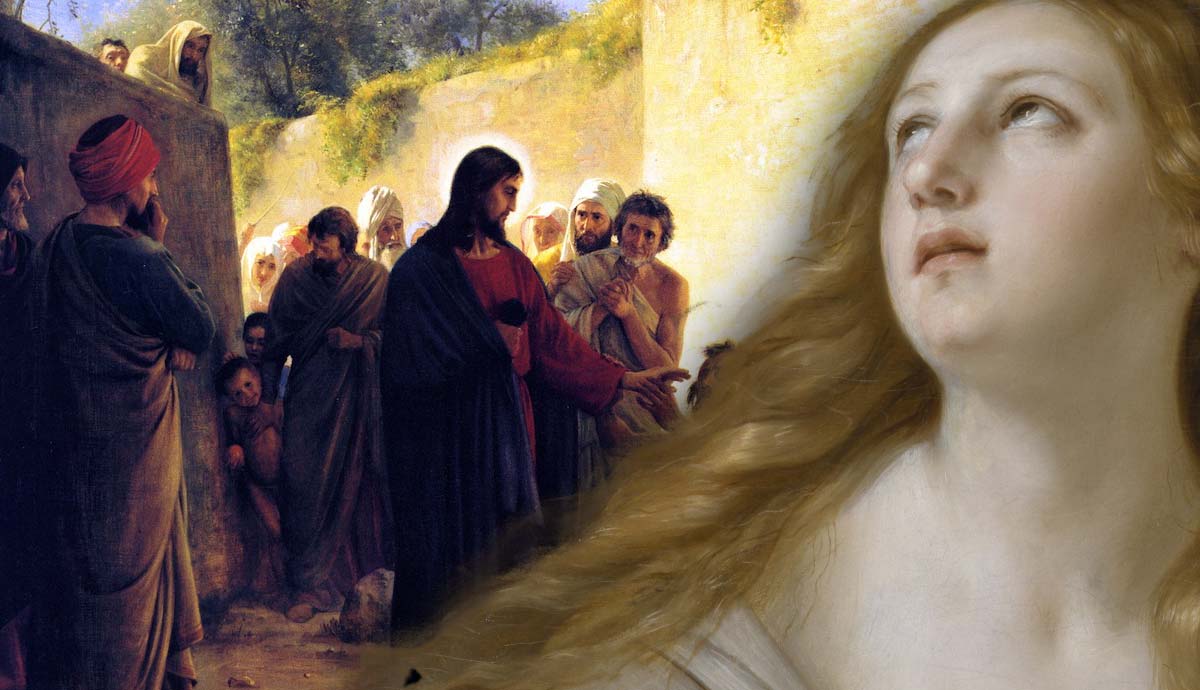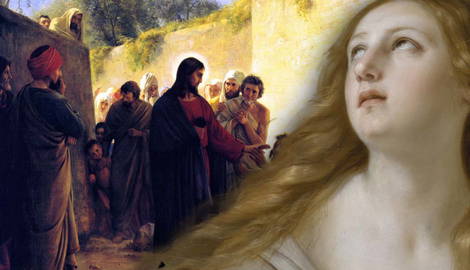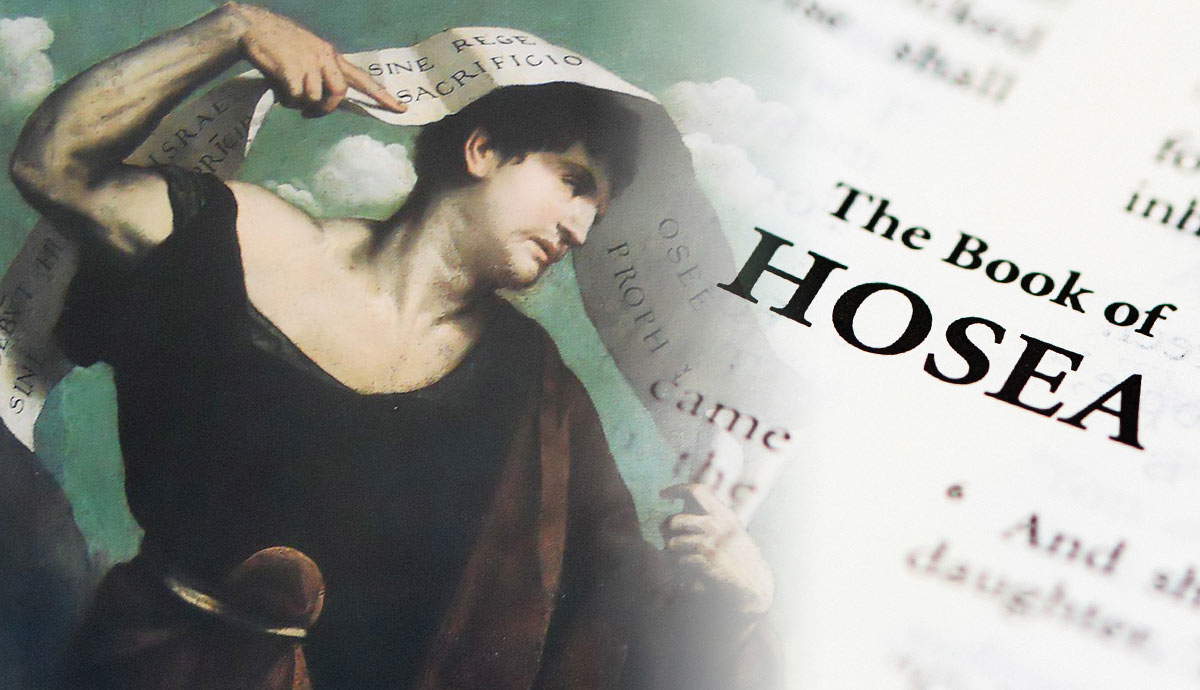
Jesus Christ is one of the most important religious figures in history. During his life, he was a revolutionary, sage, teacher, and purported miracle worker. In death, he has been revered and studied through a myriad of different lenses. Many religions incorporate Jesus and his teachings in their theologies, while others place him at the very center of their worship. This article will delve into Gnostic views of Jesus Christ, and how they differ from traditional Christian views, along with how he is presented in Gnostic texts.
Historical Background

Gnosticism was an early heretical religion that developed in the first few centuries after the death of Jesus Christ. Christianity was not the highly organized religion that it is today, with hierarchies and organized texts to guide adherents. This led to various disputes and sects within early Christianity that the early Fathers of the Church fought to control. One of these offshoots was Gnosticism.

Gnosticism was considered heretical due to its far-out ideas regarding salvation, the nature of the universe, and Jesus Christ. Some of these ideas include the belief that the world was created by a malevolent, lower god called the Demiurge, which in turn led to the belief that everything physical is malevolent as well. Along with this is the heretical belief that each person is responsible for their own salvation and that salvation is not found through Jesus Christ.

Even though Gnosticism was considered a heretical religion by the early church, it was still popular among scholars and the public during that time. Valentinus (c. 100 CE – c. 180 CE) was a popular Gnostic scholar and theologian who established his own school in Rome and accumulated a large following throughout the empire.
To prevent the spread of heretical ideas and beliefs, early church leaders ordered the burning of any Gnostic texts and the punishment of Gnostics. This more or less squashed Gnosticism and made it very difficult for modern scholars to study until the discovery of the Nag Hammadi Library in 1945, a collection of Gnostic codices. These codices changed much of what scholars speculated about Gnosticism and answered a lot of questions surrounding this obscure religion.
The Nature of Jesus in Gnosticism

In mainstream Christian belief, Jesus is the savior of mankind, who was sent to earth by God to die for our sins on the cross. He is seen as an extension of God, which means that he is a divine being in his own right. During his earthly life, he was slow to anger and spent time with marginalized groups of society, believing everyone to be worthy of forgiveness. Ultimately, Jesus is seen as the path to salvation, and following his teachings helps mankind along this path. His teachings are chronicled in a few New Testament texts, often presented in the form of parables such as “The Good Samaritan” and “The Prodigal Son.”

Gnostic beliefs are quite different from those of mainstream Christianity. Gnostics view humans as having a modicum of divinity which can be accessed through enlightenment and self-knowledge. If humans can recognize this inner divinity, they will be able to rejoin the Supreme Being after death, which is equivalent to the Christian heaven.
Hell does not exist in Gnostic theology; the equivalent is being stuck in unknowing and ignorance. This means that they also view Jesus differently. Since each human has the ability to save themselves and lead themselves to salvation, Jesus’s role on earth seems to be obsolete. However, Gnostics believe that Jesus was a teacher who came to show mankind back to their own divinity and that his teachings are a guide on how to achieve self-knowledge.

Although the Gnostics agreed that Jesus is a divine teacher, there are some disagreements about the nature of his divinity. Since Gnostics believe that the world was created by a malevolent, lesser god, they also believe that anything physical, including our bodies, is crude and imperfect. This led some Gnostics to believe that Jesus could not possibly possess a human, physical body, since he had already achieved enlightenment and perfection. They believed that Jesus was a direct emanation of the Supreme Being (God) and bypassed the Demiurge in the chain of creation.

This also means that he never died on the cross, because he did not have a body that could perish. Other Gnostics believed that he did have a human body, but that he just achieved enlightenment and self-knowledge early in life, and that he acted as a guide for people wanting to do the same. These beliefs make it quite easy to see why Gnosticism was so violently suppressed by the early church.
Gnostic Texts and Jesus Christ

The Gnostic gospels contain alternative versions of canonical texts, and many of them were written to directly contradict what was believed at the time. For example, the Gospel of Mary Magdalene posits that Jesus imparted wisdom to Mary in secret. Jesus told Mary that salvation is found through inner spiritual knowledge of the individual, and not through his death on the cross. The apostles did not believe her, as being taught in private would mean that Jesus loved Mary more than them. Another Gnostic text, the Gospel of Philip, also asserts this point:
“. . . the companion of the [Savior is] Mary Magdalene. [But Christ loved] her more than [all] the disciples, and used to kiss her [often] on her [mouth(?)]. The rest of [the disciples were offended] . . . They said to him, ‘Why do you love her more than all of us?’ The Savior answered and said to them, ‘Why do I not love you as [I love] her? When a blind man and one who sees are both together in the darkness, they are no different from one another. When the light comes, then he who sees will see the light, and he who is blind will remain in darkness.’”
Some scholars speculate that what comes after “kiss her [often] on her…” could just be forehead or feet, which changes the meaning to be one of respect. Nevertheless, this is in direct contradiction with the New Testament, which only talks about Mary Magdalene as a companion and follower of Jesus, and who was certainly not loved more or more highly regarded than the apostles.

Another Gnostic text, the Gospel of Judas, paints a very sympathetic picture of the man who is considered the ultimate betrayer in Christianity. This Gnostic text states that Judas was the only apostle who truly understood the teachings of Jesus and the meaning of his life and death. In this gospel, Jesus teaches Judas that salvation can be found through connecting with the God within each person and that this is how your soul becomes immortal. Jesus even tells Judas:
“You will exceed all of them, for you will sacrifice the man that clothes me.”
It is said that the other apostles misunderstood this teaching and instead spread the practice of animal sacrifice. This practice causes your soul to die, and you will be unable to join the Supreme God after death. Consequently, only Judas achieved salvation, while the other apostles’ souls were doomed to die.

Concerning the miraculous event of Jesus’s birth, the Protoevangelium of James asserts that Mary remained a virgin after delivery. Her perpetual virginity is established by the way in which Christ was born: a golden mist descended upon Mary, and when it faded, she held the baby Jesus in her arms. His childhood is chronicled in texts like The Infancy Gospel of Thomas, which describes Jesus as a mischievous child who cursed a few children to drop dead and later resurrected them to walk back this cruelty. This is a far cry from the benevolent, kind person Jesus was described to be in the Bible. All of these texts, along with many others make it quite clear why Gnosticism was and is considered a heretical religion.
Influence and Legacy

The alternative Gnostic views of Jesus, along with Gnostic texts about Jesus, proved that early Christianity was much more diverse than previously thought. In fact, it was much more diverse than the highly structured institution that Christianity is today. After the discovery of the Nag Hammadi texts, Gnosticism went through a revival, with many Gnostic churches popping up in countries like France and the US. It is still a heavily studied topic, with new discoveries, translations, and interpretations being made in the modern era. Gnostic interpretations and views on the life of Jesus are an invaluable addition to what we know of early Christianity, a time that is cloaked in mystery and obscurity.










